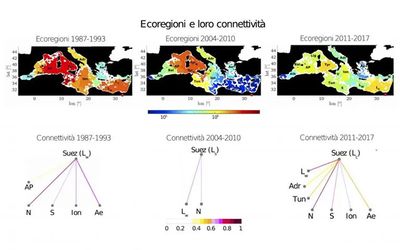The identifcation of areas with relatively homogeneous ecosystems (ecoregionalization) and their connectivity is key to environmental management and species conservation. These ecoregions provide a framework for investigating complex problems, from monitoring pollutant or invasive species dispersal to designating efective marine protected areas.
Recently, a study carried out by researchers from CNR in Pisa and Georgia Institute of Technology (Georgia Tech) in Atlanta, published in the journal Nature Scientific Reports, proposed a new method to localize ecoregions, and study their changes and connectivity.
This method helps to test the vulnerability of ecosystems to current changes and to predict the evolution of connectivity in the future.
For the analysis of ecoregions and their connectivity, the team, including Dr. Lyuba Novi, Dr. Fabrizio Falasca, and led by Prof. Annalisa Bracco, adapted a methodology developed at the School of Computer Science in the College of Computing at Georgia Tech.
The physical intuition behind this work is based on the fact that sea surface temperature depends on large-scale atmospheric heat fluxes, but on smaller scales (tens of kilometers) it contains information about sea currents: the time course of temperature at one point in the sea and that of another point "connected" by a sea current are strongly correlated. The method identifies regions that are uniform in their physical and transport properties, and then connects them together if the signal propagates from one region to another, using a machine learning technique.
The results of the study revealed the existence of distinct marine ecoregions that changed significantly over the period analyzed.
Read the full article by Lyuba Novi (IGG-CNR) and Annalisa Bracco (Georgia Tech) and published on Rinnovabili.it.
